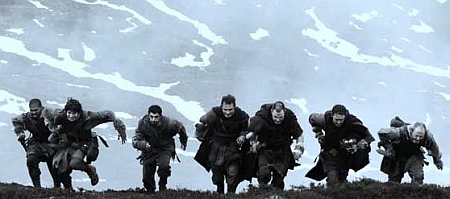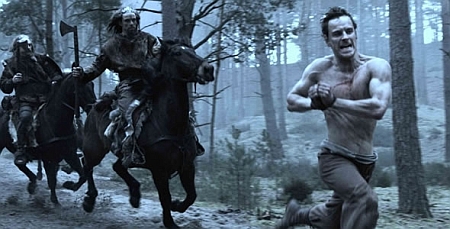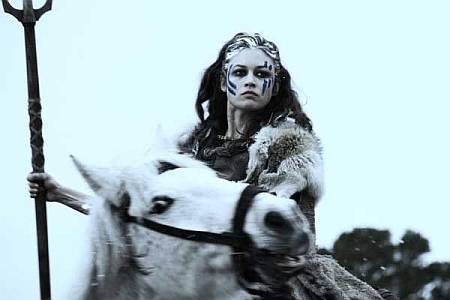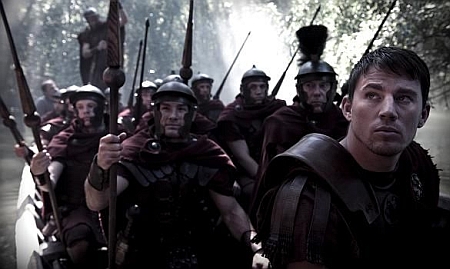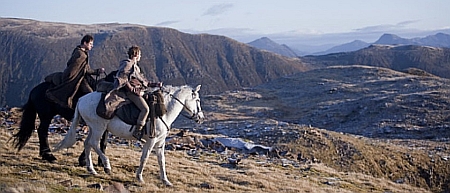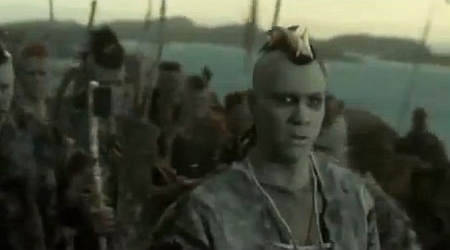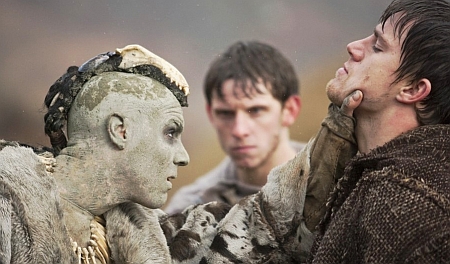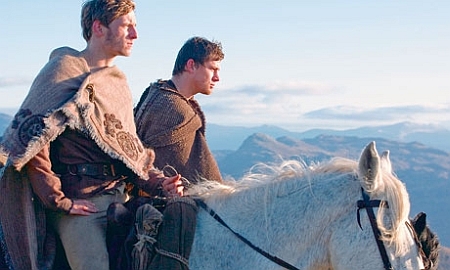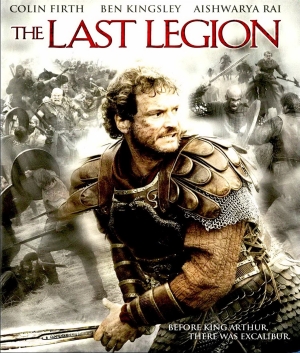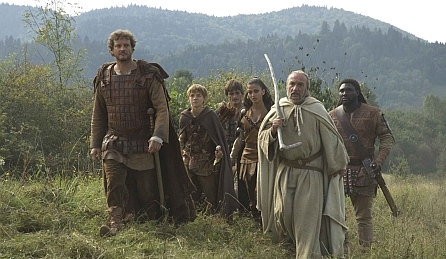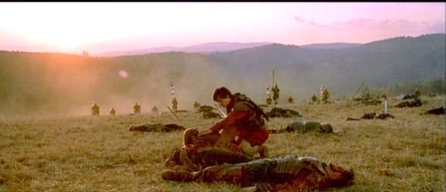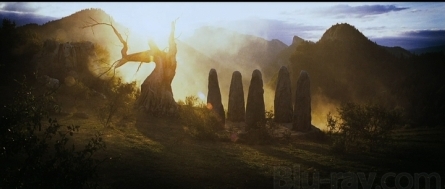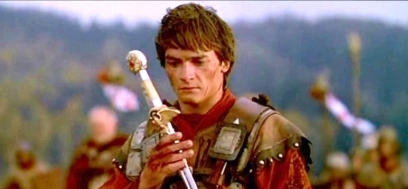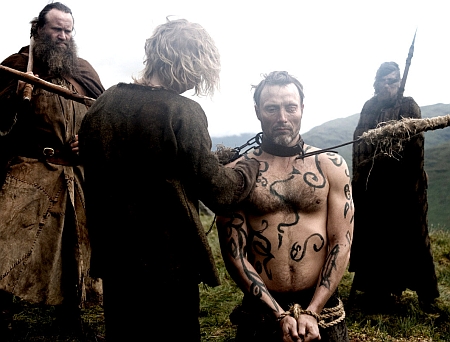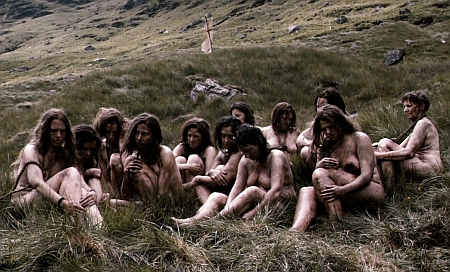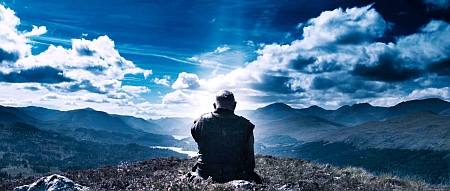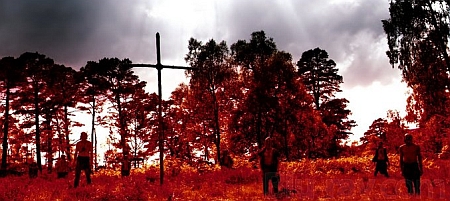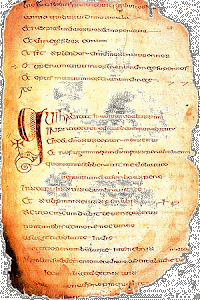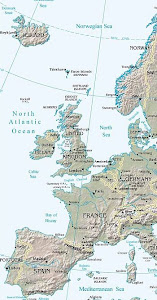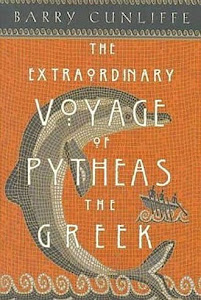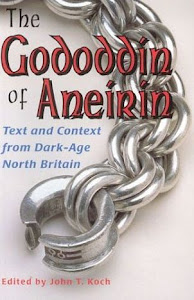There is currently a story in the press about an author canvassing over 100 ancient Biblical and classical sources and finding no reference to Jesus that would corroborate the 4 Gospels (whose accounts do not agree, and are not regarded as eyewitness accounts but third-hand). The one exception, Josephus’s History of the Jews, he argues was a later interpolation. Author Michael Paulkovich (described in his jacket blurb as a columnist for American Atheist) says finding no mention of Christ in 126 near-contemporary historical texts indicates he was not historical, with Christianity built around a myth.

The press story mentions his book No Meek Messiah, which is strange as this not a new book, being copyrighted in 2012 and published in March 2013, itself compiled from a series of earlier articles. Usually, these sensational-claim articles are PR-based, fed to the press to tie in with the launch of a new book, or result from a hyped-up reaction to its recent publication causing controversy. Nor are we near Easter, the other circumstance in which Jesus-related works and controversies annually appear. At any rate, this is the latest development in the academic ‘Jesus Wars’, defined as ‘the endless debate over just who the historical Jesus was’.
Above: a screencap of the Mail Online feature
However, there may be a near-contemporary ‘Life’ in the 65,000-word codex whose original title is said to have been ‘The Book of The Illuminators Having The Authority of The Nasorines’. (The Nazarenes were an early Christian group – perhaps the earliest – named after Jesus’ home base of Nazareth; the difference in spelling is accountable as one version being Greek and another from vowel-free Semitic languages, where the root is N-s-r.) This codex source was later labelled The Gospel of The Kailedy, 'Kailedy' being given in the text as the ‘wise strangers’ who came to Britain with Jesus’ elder relative Joseph of Arimatheia, and who imported the codex of Jesus’ life and teachings. It isn’t generally classed as an ancient source (some even call it a modern hoax) as it didn’t surface till the 20th C, when a religious trust issued it, saying they and their predecessors had held the documents for centuries, or at least copies of them. There is no ancient parchment to subject to carbon-dating, and no other ancient writers cite it by name that we know of. (The manuscripts seem to have had no standard title, having different names each time they were re-compiled or handed down.)
Yet it may well be that this and other documents known today as the Kolbrin or Coelbook or Kailedy for short are the ‘ancient books’, ‘documents of no small credit’ etc cited by St Gildas, William of Malmesbury et al as sources for the British church’s longstanding claims of primacy over the Roman church. These were based on the assertion there was a Christian church at Glastonbury in the 1st C. AD, possibly within 4 years of the Crucifixion, and were reluctantly accepted by Rome for centuries, which suggests they were real and substantive.
The Kolbrin or Coelbook source-compilation has in the past few years become internationally known for certain sensational claims made about it following the publication in the US of a paperback 2-volume edition, either by the publisher or 3rd parties on the internet. I’ve argued previously that these extravagant 3rd-party claims (e.g. predicting the world being destroyed by a comet/Planet X/Niburu in 2012) are not supported by the text itself, only by various ‘end-times’ enthusiasts and commercial interests. These claims have been predictably met by the standard counterclaim against almost any Celtic or non-Roman source, that the whole thing must be a modern hoax, and the important thing is not to read it and try to judge for yourself, as you will be taken in and your mind irreparably damaged.
The irony amidst the various wild claims and counter-claims is that the Kailedy, the one arguably sensational text, the account of Jesus’ life and fate, was strangely omitted from the popular paperback version, for no given reason. As mentioned, there is no way to date the account, except by internal references to current or recent events, in this case to the time of Caratacus’s [Welsh Caradoc] resistance to the Roman invasion of AD 43:
In order that the truth may be properly displayed, I have united in one narrative the diverse accounts brought to these shores by the Kailedy, in the days of battle glory, when the mantle of Herthew descended upon Inhawk Caradew. Led by wise Elyid, the Noble Commander, they were compatible companions of the brave Britons. I have faithfully copied the accounts of that John whom we call Numa, who knew our earthly father, touching on events of his times according to the books which have been written and left to us. Here is the Book of John the Enlightened of God and the Book of the Nasorines and the Illuminated Ones
It may be that this was also the longer source text the Gospel accounts also drew on. (Not the only one, though, as there are incidents in the Gospels not present here.) The claimed eyewitness-source author ‘John whom we call Numa’ is not presently identifiable as there were various Johns in the Apostles, none of whom were called Numa (a Roman name) by historians. (There’s John the Baptist, John of the Wilderness, John the Evangelist, the Apostle John, John the Presbyter, John of Patmos, John the Revelator, John the Divine, John the Theologian; some of these are probably just different sects’ names for the same man). ‘Elyid, the Noble Commander’ is identified in the text as the ‘kinsman’ of Jesus also known as Joseph of Abramatha [spelled elsewhere as Arimatheia].
My brothers, with this I send the book concerning Jesus Iduin - son of Joseph the carpenter and Mary - who, through His sacrifice to love and duty, became our own Esures. His teachings were brought to us by those who lived within the circle of His light and safeguarded by our earthly father in the faith, he being not least among the articulate ones who knew Jesus, and a person of no mean estate, both in the distant land from whence he came and in this no less virile land.
The name ‘Jesus Iduin’ is a slight mystery, as is ‘our own Esures’; both are Celtic names to do with religious sects, but tracking down their meanings need not detain us here. Joseph of Arimatheia here is also referred to as Joseph Idewin, and the usage suggests a religious dynasty [Dewi itself can mean god in Welsh]. Suffice it to say they indicate the way Jesus’ teachings were grafted onto Druidic and other Celtic sources to create the pre-Roman, Celtic Church of Britain.
The main account of the life of ‘Jesus the Nasorine’ is more complete than in the Gospels and the incidents here make more sense. For example, the Sunday school motif that Jesus was born in Bethlehem because his parents had to be there for a Roman census has caused problems with claims of historicity, as there was no such census. Here, the census is a family or dynastic one, for those who can document descent from the royal House of David. (“A decree had gone out that all who claimed kinship within the House of David should be gathered for enrolment at the City of David, called Bethlehem.”) The description of Mary, incidentally, has no magical ‘virgin birth’, just the remark that his mother had been [past tense] ‘a virgin pledged to God and the Temple by her father’.
The Bible story’s other familiar Sunday school motifs, the shepherds, the stables and manger, the 3 ‘wise men,’ are all explained more fully. The ‘star of Bethlehem’ comes into the story with a different context. The 3 wise men do not follow it as a guiding star, something which has caused problems for those asserting the Gospels’ historicity. Instead, the 3 are already in Bethlehem, and are evidently astrologers (the term is not used, just sages, akin to the Gospels’ magi) consulted as per custom at a child’s birth as to what destiny lies in their stars.
One of the sages said, “It is strange indeed, for this Child is born under no usual star, but under one that is a star in appearance only and not in nature, having a power not in other stars. He is destined for greatness and will motivate events touching the lives of all men.”
It’s impossible to say what this star-in-appearance-only would be, as astrologers would know a planet when they saw one. (A planetary conjunction of Jupiter and Saturn has been suggested.) The planet Venus appears as a bright evening star, but it’s regularly seen in the west, whereas this is an unusual event, confusingly described in Biblical terms as a ‘star out of the East.” This odd phrase may however also find an explanation here. Word of the sages’ pronouncements spread, with the implication this was the long-awaited Messiah who would free the Jewish people, which generated a certain grim interest from the priesthood and then child-slaying king Herod. Joseph and Mary prudently fled with the baby before Herod’s men arrived, and when asked the infant’s whereabouts, the trio reply ‘deviously’, saying “His star points towards the East.” (There’s also a possible tie-in here with Eastern mystical practices of yogic-style bodily control etc described below, which Jesus may have learned in the wilderness.)
The text says Jesus made his living working with wood (as we would put it today), making plough-handles and the like. There are no ‘missing years’ travels to Egypt, Asia, Britain etc, just a reference to his working as a craftsmen among the Kenites, who were a nomadic people sometimes identified as a northern enclave, based in Judah, of the Midianites. (A map of the 'Holy Lands' from the LDS church, with key to towns mentioned in the Gospels, is here.) He then stays in desert areas honing his skills as speaker and healer after being baptised by John the Baptist (who here is called by a couple of other names, like The Forerunner), which would put most of the account after AD 27. Most of the text is of Jesus’ sermons, which were supposedly written down verbatim by an unnamed disciple (perhaps the elusive John alias Numa) who acted as official scribe, and are apparently reproduced in their entirety (as opposed to the often elliptical Gospel versions). That implies this is the first and only surviving eyewitness account.
The sermons are accompanied by a few biographical details of his simple lifestyle, along with mentions of some healing he does; but there are no patent miracles, and in some cases the healing does not work, or Jesus refuses to try. Healing by ‘laying on of hands’ as well as dynamic evangelising speeches remains a feature of certain American churches in the southern states. Here, no laying on of hands is actually described, but the sermons suggest the healing is of the ‘casting out demons’ sort, a gift he says, of the Holy Spirit, of which he is merely a conduit. The healing seems to demonstrate publicly that he is more genuine than other then-contemporary candidates for the role of messianic deliverer from Roman rule. Mostly, he keeps away from the big towns where crowds would get him seen as a threat by the authorities. When in the end he deliberately heads for Jerusalem, it is with the result he himself has predicted, a fulfilment of the then-current prophecy of messianic self-sacrifice. The hostile priesthood are called the Perushim, which is an attested variant name for the Bible account’s Pharisees.
The circumstances of his betrayal (such as the ‘Judas kiss’) are explained more fully.
those in positions of power were taking counsel as to how they might take Jesus by guile and deliver Him to the Romans. For they feared a rising of the people during the Great Festival of the Jews. Now, Judas Iscaroth, son of Simon, who had followed Joseph the Just before coming to Jesus and becoming one of the twelve envoys, sought for the Chosen One Who would deliver the Jews. This he now believed to be another, not Jesus; and he therefore sought to have Jesus held during the festival.
The text never states that he died on the cross, but that he was pronounced dead by the attending centurion. After the disciples take him from the tomb, it states certain things may not be told about what happened next. ("Now, things happened on the Sabbath which may not be written, for they are in the secret of the Lord, known only to the elect of the House of God, which is in the Isle of Departure.") When he reappears to the assembled ‘wake’ group, the text does not describe him as a ghost or spirit, and the wording is odd – or careful:
Then, while they were seated at a table, Jesus came among them and said, “Let us take food together and rejoice, for the prophecies have been fulfilled regarding the Chosen One as it is said in the Holy Books. The Servant of Man is arisen from among those who sleep, for death has not claimed Him.
He instructs them to go forth and carry his teaching abroad. Josias, ‘called Joseph of Abramatha’, a descendant of Zadok [High Priest to The First Temple in Jerusalem] and his brother-in-law Nikodius, ‘secret followers of Jesus’, lead the way - to southwest Britain. Here’s how the account ends:
… when Pontius Pilate returned to Rome, Joseph departed from his home shores, coming to Setnadoin, from whence he moved to a well at the foot of a hill. He brought with him a clay cup which had been set in silver by a silversmith, and this was that cup used by Jesus. Some say Joseph married Holy Mary after the death of his wife, but this is a known heresy put about by those in ignorance of what is written, for his wife was not that Mary.
Next, we have a physical description of the long-sought Grail cup, and a rebuttal of the Gnostic legend JofA brought Mary, Jesus’ mother, to Britain and married her. Nor does this 2nd Mary seem to be Mary Magdalene, as some Gnostic-inspired modern bestsellers have argued, usually with the coda that she and Jesus had a child who was the start of an ongoing holy bloodline. (This ‘Kailedy’ version depicts him as having strict, fundamentalist 'no excuses' views about marriage and fornication.) Here, that Mary ‘of Magdala’ was ‘also called Mary of Bethena’, so that would also let Mary of Bethany out as a candidate for Joseph’s 2nd wife, but there are still so many other women in the disciples’ circle named Mary we can’t identify her. As with John/Johannes for men, in its non-Anglicised form Marryam or Miriam, it was the most common baptismal name for women.
The 2nd of the two-volume Kolbrin/Coelbook compilations available in paperback has more detail on the Glastonbury mission, which I’ve outlined in a previous post, here.
The only print publication of this unofficial, non-canonical Life was in 1998, by the Hope Trust, and is now long out of print. However there is an online version made available I gather (there seems to be a legal dispute simmering) originally via the Culdian Trust, who had it online but now sell an e-book PDF version, here. The entire 65,000-word Kailedy account is compiled as a single page on another site, here.









